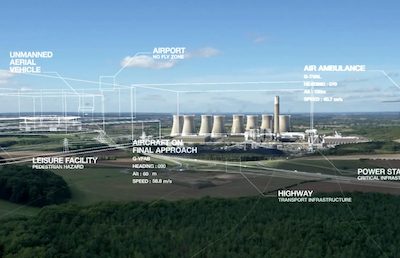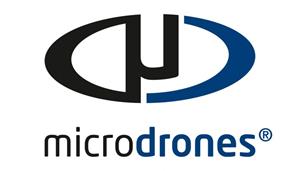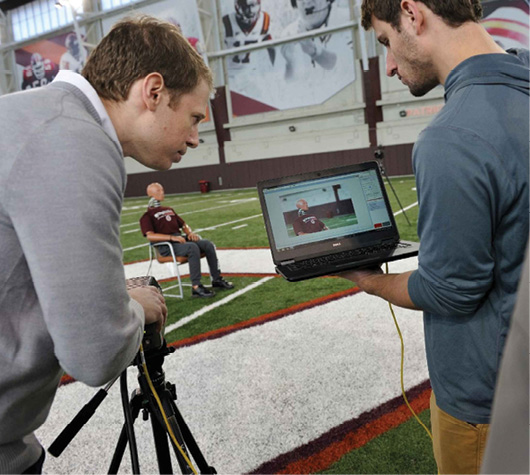
Courtesy Virginia Tech
While operators do their best to safely fly their drones, there’s always a chance the systems might crash—and that could lead to an injury for anyone who happens to be on the ground below.
The FAA’s Part 107 restricts flights over people (unless a waiver has been granted) to avoid such situations, but many unmanned aircraft systems operators would love to see this restriction lifted to make more applications possible. Before that can happen, researchers and other industry leaders need to understand the risk involved and find a way to mitigate any injuries an accident could cause, an area there isn’t a lot of data for thus far, said Mark Blanks, the director of the Virginia Tech Mid-Atlantic Aviation Partnership (MAAP).
A few months ago, researchers at Virginia Tech began to look at the injury risk small UAS pose if they do crash into a person. MAPP is partnering with Virginia Tech’s College of Engineering
for this project, gaining expertise from biomechanics professors who’ve been assessing head injury and concussion risk in car accidents and sports for the past 10 years. For now, the UAS research will focus on the risk for potential head and face injuries, including lacerations.
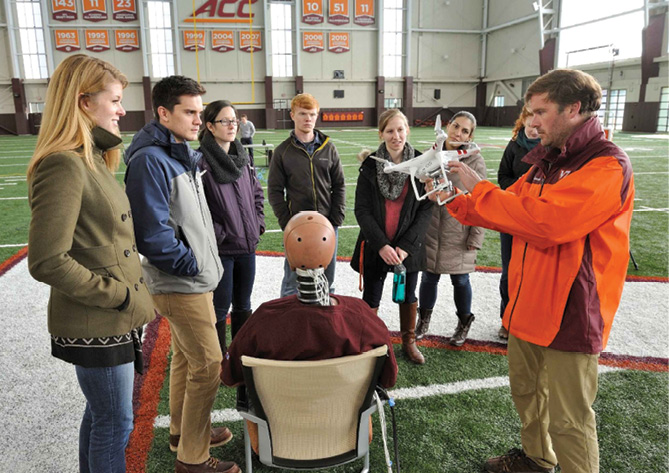
Courtesy Virginia Tech
The FAA is working to develop regulations that could allow certain small UAS to fly over people, depending on the injury risk they pose. This research could prove invaluable in making flights over people possible, which is key for a variety of commercial UAS applications from package and medicine delivery to news coverage.
“It’s critical to understand that risk and it’s really critical to understand how to mitigate it,” said Blanks, who chairs an industry standards subcommittee developing guidance for safe flights over people. “Certain class of UAS won’t hurt at all when they hit someone, and we want to help establish what that threshold is. And if it’s going to hit you and hurt you, what mitigations can we put in place. Is it a parachute? An airbag? We want to operate in a manner to prevent injuries, but if a UAS did hit a person you want to have a way to reduce the energy there.”
The Research So Far
The team recently completed the first experimental field testing, said Steven Rowson, an assistant professor of biomedical engineering and mechanics who is leading the injury biomechanics side of the research. This involved crashing a drone into an instrumented test dummy to measure force and movement, telling researchers what forces the drone is putting on the person, or in this case the dummy. If researchers can characterize those forces, they can understand the probability of an injury and whether that injury will be severe or mild.
So far they’ve tested a small sample of drones, Rowson said, but would like to expand in future experiments. Different types of drones can interact with the head differently, and a variety of factors also contribute to injury outcome, including how fast the UAS is moving and if the blades are guarded or not.
“Our initial work has been with kinetic energy transfer,” Blanks said. “We also want to repeat the same exact hit over and over through drop tests, which we should be completing in the coming months.”
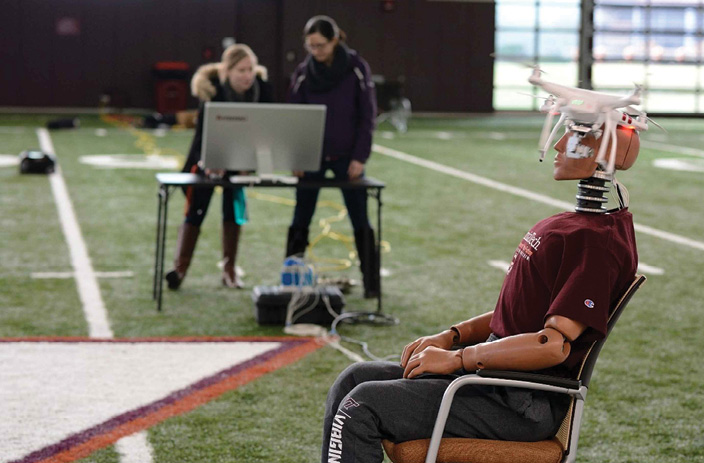
Courtesy Virginia Tech
The Challenges
With any kind of injury analysis, researchers need to take the right measurements many different ways, Rowson said. There are several scenarios that can happen when a drone interacts with the head, so developing a robust system that measures all those different aspects is key. Striking the dummy’s head in a controlled manner also represents a challenge, especially when trying to replicate what would happen in the real world.
“We also need to prove any mitigants we come up with are reliable,” Blanks said. “Is a parachute going to work every time and at what altitude will it deploy, for example. There are a lot of variables and coming up with feasible, reliable solutions is one of the biggest challenges.”
And mitigating risk is different for every drone depending on its design and other factors, Rowson said. So an intervention you implement on one platform might not be as effective on another.
“Once we understand the risk and the mechanics, we can integrate different design aspects that reduce risk,” Rowson said. “That’s the same approach we take with automobiles and with sports helmets.”
Looking Ahead
The team will continue research efforts in the coming months and potentially even the coming years. Rowson would like to eventually expand the research to include larger UAS and other areas of the body besides the head and neck.
“This research is part of doing our due diligence and making sure there’s not some unacceptable risk to people,” Rowson said. “Drones are going to become more and more common and we need to understand the potential risks of them interacting with people. There will be accidents at some point and we need to know how to manage them.”




